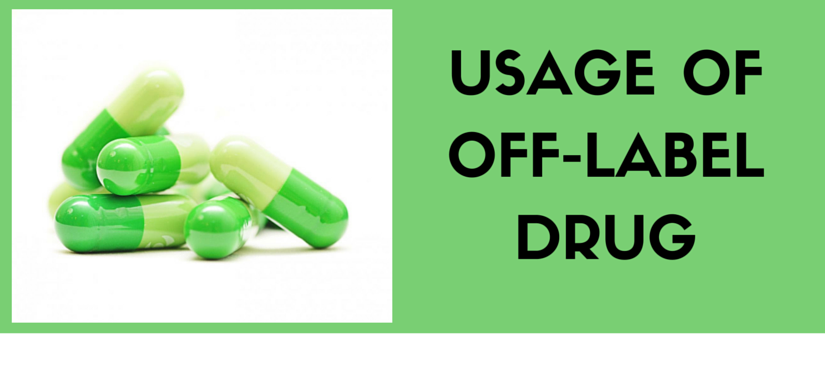
Usage Of Off-Label Drug: What Is It?
“Off Label prescribing is when your doctor prescribes a drug for a condition but the U.S. Food and Drug Administration (FDA) has reviewed and approved that medicine to treat a different health issue.”
Off-label prescription drug usage is very common and legal in the U.S. Despite the prominence of off-label drug use, most of the patients are unaware that they are taking an off-label drug. And doctors’ are not required to tell a patient that a drug is being used off-label.
Understanding FDA approval and drug labels
Every prescription drug available in the U.S. market carries an individual, FDA-approved label. The drug label offers detailed information regarding:
1. Recommended drug dosage i.e., how much and how often the drug should be taken.
2. Drug route i.e., how to take the drug such as a tablet taken by mouth or in the form of syrup.
3. Drug side effects
The drug label also includes some warnings and other important usage information. Doctors’ use the drug labels to decide how to prescribe the drug to patients.
Off-label Drug Usage
People would be amazed to find that FDA regulates drug approval, not drug prescribing. This means that doctors’ are free to prescribe a drug for any reason that they think is medically appropriate. Off-label use is so common that almost every drug is used as off-label in some certain situations. So if your doctor is prescribing you an off-label drug, means they’re prescribing drug in the following ways:
1. Prescribe off-label drug for a condition that is not approved by the FDA
For example, a drug name “Aripiprazole (Abilify)” is approved by FDA to treat schizophrenia, but sometimes doctors’ prescribe it off-label to treat dementia.
2. Prescribed in a dosage or by a route that is not reviewed or approved by the FDA
Morphine drug is not approved by the FDA for rectal use. However, sometimes doctors’ prescribe it to patients who can’t swallow tablets.
3. Prescribing an off-label drug for a patient age group that has not been approved by FDA.
A drug polyethylene glycol 3350 (Miralax) is not approved by FDA for children usage. However, your child’s doctor may prescribe it for your child depending on the health condition.
Another example of a drug that is commonly prescribed for off-label usage is dexamethasone. It’s approved for many uses, such as reducing inflammation, treating allergic reactions and swelling. This medicine is not approved by the FDA to prevent nausea of patients undergoing chemotherapy. Still, it’s been widely used off-label to cure nausea of cancer patients.
Is Off-Label Drug Use Safe?
As doctors’ are familiar with the drugs – their dosage, safety, side-effects and post clinical trial for the usage of off-label, these drugs are considered to be safe. However, a study was done by JAMA Internal Medicine in 2015, according to which off-label drug use have more adverse effects than approved drug use. Researchers found that 54% of the patients that were prescribed off-label drugs, experience various side-effects, such as drug interaction, allergic response, which led to discontinuation of the medicine.
So if your doctor is prescribing you off-label drugs, ask your doctor about side-effects of that off-label drug!


